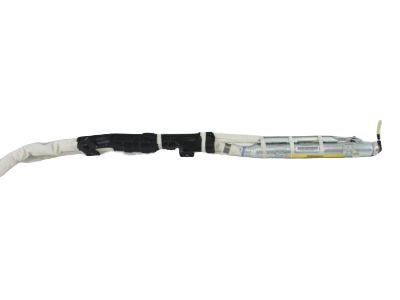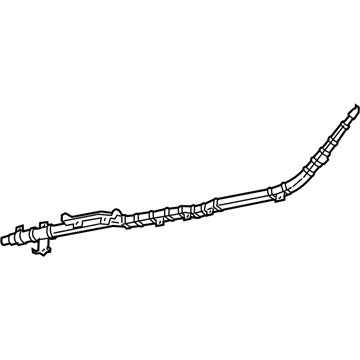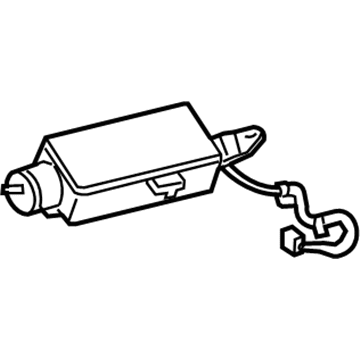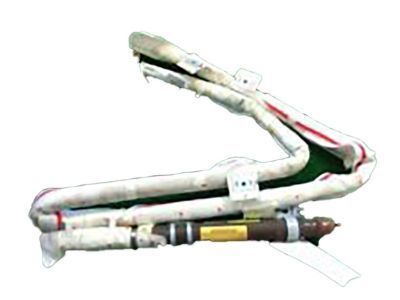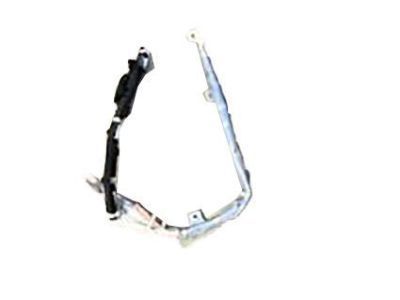×
ToyotaParts- Hello
- Login or Register
- Quick Links
- Live Chat
- Track Order
- Parts Availability
- RMA
- Help Center
- Contact Us
- Shop for
- Toyota Parts
- Scion Parts
My Garage
My Account
Cart
OEM 2009 Toyota 4Runner Air Bag
Air Bag Module- Select Vehicle by Model
- Select Vehicle by VIN
Select Vehicle by Model
orMake
Model
Year
Select Vehicle by VIN
For the most accurate results, select vehicle by your VIN (Vehicle Identification Number).
3 Air Bags found

2009 Toyota 4Runner Inflator Curtain, Passenger Side
Part Number: 62170-35020$1325.56 MSRP: $1942.62You Save: $617.06 (32%)Ships in 1-3 Business DaysProduct Specifications- Other Name: Air Bag Assembly, Curtain Shield; Curtain Air Bag, Right; Head Air Bag; Air Bag Assembly, Curtain Shield, Passenger Side
- Position: Passenger Side
- Part Name Code: 62170A
- Item Weight: 12.20 Pounds
- Item Dimensions: 47.4 x 18.7 x 9.2 inches
- Condition: New
- Fitment Type: Direct Replacement
- SKU: 62170-35020
- Warranty: This genuine part is guaranteed by Toyota's factory warranty.
2009 Toyota 4Runner Passenger Air Bag
Part Number: 73960-35090$751.70 MSRP: $1101.62You Save: $349.92 (32%)Ships in 1-3 Business DaysProduct Specifications- Other Name: Air Bag Assembly, Instrument Panel; Instrument Panel Air Bag, Upper; Passenger Inflator Module; Air Bag Assembly, Instrument Panel Passenger W/O Door
- Part Name Code: 73960A
- Item Weight: 8.00 Pounds
- Item Dimensions: 15.5 x 11.2 x 7.7 inches
- Condition: New
- Fitment Type: Direct Replacement
- SKU: 73960-35090
- Warranty: This genuine part is guaranteed by Toyota's factory warranty.
 Product Specifications
Product Specifications- Other Name: Air Bag Assembly, Curtain Shield; Curtain Air Bag, Left; Head Air Bag; Air Bag Assembly, Curtain Shield, Driver Side
- Position: Driver Side
- Part Name Code: 62180A
- Item Weight: 12.30 Pounds
- Item Dimensions: 47.4 x 18.7 x 9.5 inches
- Condition: New
- Fitment Type: Direct Replacement
- SKU: 62180-35020
- Warranty: This genuine part is guaranteed by Toyota's factory warranty.
2009 Toyota 4Runner Air Bag
Looking for affordable OEM 2009 Toyota 4Runner Air Bag? Explore our comprehensive catalogue of genuine 2009 Toyota 4Runner Air Bag. All our parts are covered by the manufacturer's warranty. Plus, our straightforward return policy and speedy delivery service ensure an unparalleled shopping experience. We look forward to your visit!
2009 Toyota 4Runner Air Bag Parts Q&A
- Q: How does the Air Bag Supplemental Restraint System (SRS) function and what precautions should be taken during servicing on 2009 Toyota 4Runner?A: The Supplemental Restraint System of the vehicle consisting of driver Air Bag and front passenger Air Bag and side Air Bag and curtain shield Air Bag and front seat belt pretensioner requires proper servicing steps to stop accidental deployments when repairing which could trigger dangerous incidents. Wait for a minimum of 90 seconds until the negative terminal battery cable removal and ignition switch LOCK position activation before beginning service operations because the SRS maintains Back Up power. Temperature and fire exposure must be prevented from reaching the steering pad combined with the front passenger Air Bag assembly and a variety of sensors found in the SRS system. High-impedance volt/ohmmeter devices with minimum 10 kOhms/V present the best choice for troubleshooting while all battery disconnectations need DTC inspection since battery disconnection clears saved data. All SRS components need to be inspected after a minor collision even when the Air Bag systems did not activate. Never reuse SRS parts from another vehicle, and replace any damaged components, including the Steering Pad (Part Number: 12345), Front Passenger Air Bag Assembly (Part Number: 12346), Front Seat Side Air Bag Assembly (Part Number: 12347), Curtain Shield Air Bag Assembly (Part Number: 12348), Center Air Bag Sensor Assembly (Part Number: 12349), Front Air Bag Sensor (Part Number: 12350), Front Seat Inner Belt Assembly (Part Number: 12351), Seat Position Sensor (Part Number: 12352), Occupant Classification ECU (Part Number: 12353), Side Air Bag Sensor (Part Number: 12354), Rear Air Bag Sensor (Part Number: 12355), and Front Seat Outer Belt Assembly (Part Number: 12356). Synchronize the sensor operations with a 90-second waiting period when clearing the negative (-) terminal cable followed by sensor installation before connector connections or disconnections and always use mounted Air Bag sensors. When experiencing an accident it is essential to verify DTCs by inspecting the SRS warning light while replacing Air Bag sensors that deployed during the collision. All SRS connectors are marked yellow for simple identification purposes while their connection systems deliver both safety and accidental disconnect prevention. The process of disconnecting steering pad connectors alongside those from curtain shield Air Bags and front seat belts requires a screwdriver to access the lock button followed by raising the connector. There are two stages to clear the lock slider for the front passenger Air Bag assembly and front seat side Air Bag assembly follow the first step by sliding the lock slider to disconnect then check that the slider resets normally before reconnection. Achieve disconnection of front Air Bag sensor, side Air Bag sensor and rear Air Bag sensor by grasping both sides of their outer locking sleeve then release the sleeve to return to its original position before reconnecting.
